Housing styles emerge slowly and typically appeal first to cutting-edge architects, builders, and interior designers. As a trend spreads and gains wider interest, it may go mainstream, become almost ubiquitous, and eventually lose its star power. Just look at once-favored granite, which now has been replaced by the equally durable and attractive options of quartz and quartzite.
The economy, environment, and demographics always play a big role in trend spotting. But this year there are two additional triggers: a desire for greater healthfulness and a yearning for a sense of community.
1. Community Gathering Spaces

How it will impact you as a real estate pro: Multifamily buildings and even single-family residential developments are rushing to offer an array of amenity spaces to serve this need. Some popular options include clubhouses with spiffy kitchens, outdoor decks with pools and movie screens, fitness centers with group classes, and drive-up areas for food-truck socials. At its Main+Stone building in Greenville, S.C., The Beach Co. began hosting free monthly events such as its “Bingo & Brews.” Make sure you know which buildings, communities, and neighborhoods offer these sought-after social events and gathering spaces so you can help clients connect.
2. Taupe Is the New Gray
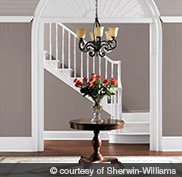
How it will impact you: Dallas-based designer Barbara Gilbert considers taupe a smart alternative since it still performs as a neutral with other colors, cool or warm. She expects to see taupe on more exteriors — blending well with roofs, doors, window frames, and surrounding landscape — but it also will turn up indoors on walls, ceilings, kitchen cabinets, furnishings, and molding. It might even work to help update a listing clad in gray, she says, as the two colors work well together.
3. More Playful Homes
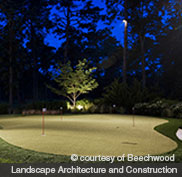
How it will impact you: Be sure you’re asking buyers how they like to spend their free time. Spaces that encourage play are trending higher on their wish lists, whether it’s a backyard bocce court (the latest outdoor amenity to show up in residential backyards) or a putting green. And sports don’t have to be relegated to the outdoors. says Gilbert; technological advances have allowed for rapid improvement in indoor golf simulators, for example. While some of her clients have installed modest models, she’s working on a dedicated golf room with software that gives homeowners virtual access to any golf course in the world. Though landscape architect Steve Chepurny of Beechwood Landscape Architecture in Southampton, N.J., designs putting greens with synthetic grass that range from $12,000 to $30,000, he also notes he’s seeing more playfulness outdoors in the form of non-sports amenities, such as pizza ovens.
4. Naturally Renewable, Warmer Surfaces
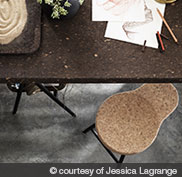
How it will impact you: In recent years, cork, a renewable material harvested from the bark of cork oak trees, has resurfaced as a favorite for myriad uses, and for good reason. Some credit designer Ilse Crawford’s introduction of cool, edgy cork pieces in her “Sinnerlig” collection for IKEA for the resurgence. Aside from aesthetics, the material is appealing since it’s resistant to mold, mildew, water, termites, fire, cracking, and abrasions. Moreover, cork can be stained and finished with acrylic- or water-based polyurethane. Chicago designer Jessica Lagrange likes to incorporate cork to clad walls and floors. “It’s an especially effective and forgiving choice since dents bounce back and floors retain heat,” she says.
5. Surface-Deep Energy Conservation
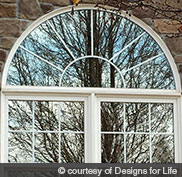
How it will impact you: After New Jersey increased its requirements for insulation, architect Jason Kliwinski, principal at Designs for Life and current chair of New Jersey’s AIA Committee on the Environment, went looking for new options. He found new low-E window film that can double the performance of glass at one-fifth the cost of a full window replacement. Several options for this film are on the market now, and Kliwinski says manufacturers such as EnerLogic are producing versions that are invisible when installed. Other surface-change artists that lower energy use and that are cost-effective and relatively easy to apply include a ceramic insulating paint coating for walls and a thermal energy shield for attic interiors. Tesla, the innovative manufacturer of electric cars, is just debuting solar glass tiles that resemble traditional roof materials such as slate and terracotta, but provide passive heat gain.
6. More Authentic, Personalized Use of Space

How it will impact you: You and your clients are likely to see a greater variety in terms of layouts, building materials, home systems, color palettes, and furnishing choices, both in model homes and in houses staged for sale. Listing agents can take the cue from this trend by helping sellers highlight the flexibility of their spaces when putting a home on the market. Buyers’ reps should similarly showcase a range of living options in each home-shopping session.
7. The Walkable Suburb
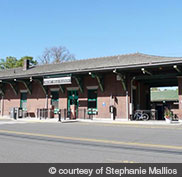
How it will impact you: A high walk score has become a recognized real estate marketing tool. Real estate salesperson Stephanie Mallios of Coldwell Banker Residential Brokerage in Short Hills, N.J., has seen a huge uptick in interest and value in single-family homes and townhouses close to town centers, especially those near a train station if residents commute to a large metropolitan area. “Most homes for sale in my area list the number of blocks and steps to public transit in their marketing materials. Homes far from everything have become less valuable,” Mallios says. The most appealing towns also incorporate individually owned shops rather than chain stores.
8. Healthier Homes

How it will impact you: A growing number of builders, remodelers, architects, and interior designers expect health to influence their business decisions due to consumer demand, according to studies from both the Urban Land Institute and McGraw-Hill Construction. You should expect to see more buyers hiring health experts to examine listings and requiring in-home contaminant removal prior to a sale. Your clients will also have greater access to additional home products that promote healthy sleep patterns, such as those featuring UV and LED circadian lighting.
9. Shifting Hearths
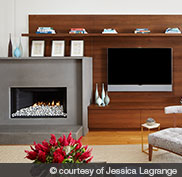
How it will impact you: Homeowners have been switching out their log-burning fireplaces with new gas models for many years. Newer on the market are the ventless alcohol-burning fireplaces that can be placed almost anywhere and without costly construction, says Los Angeles–based designer Sarah Barnard. Another increasingly popular solution is to build a fireplace outdoors, according to landscape architect Chepurny.
10. Counter Options

How it will impact you: A new countertop can make a big difference in the appeal of a room. Sally Chavez, senior product designer at Wilsonart in Temple, Texas, which manufactures engineered surfaces, says laminate options that mimic stone, wood, distressed metal, and concrete are gaining in popularity. But she recommends avoiding designs that include the “spots and dots” or speckled patterns from decades past. Some newer countertop options offer an additional perk: They lessen the time and cost of installation and also eliminate the need to discard the old countertop. Trend Transformations, an Italian manufacturer with a U.S. manufacturing facility, incorporates recycled granite, glass, and even seashells in its surfaces, which are installed over an existing countertop. Installation can be finished within a day, and prices are competitive with quartz and quartzite. Because these countertops are less porous than traditional stone, they’re also more resistant to stains and scratches.
11. The Transforming Office

How it will impact you: More of your clients are likely to need a work-from-home space, but due to the diminished size and highly transient nature of technology tools, there’s less need for a dedicated, separate office. Brad Hunter, HomeAdvisor’s chief economist, says almost any area of a house can become a workplace, but the most functional ones incorporate built-ins and furnishings that serve a dual purpose. That same desire for flexibility may someday translate to layouts that can easily change to a homeowner’s whim, such as the KB Home ProjeKt movable wall concept in its “Home of 2050” at the Greenbuild Conference and Expo this past October.



